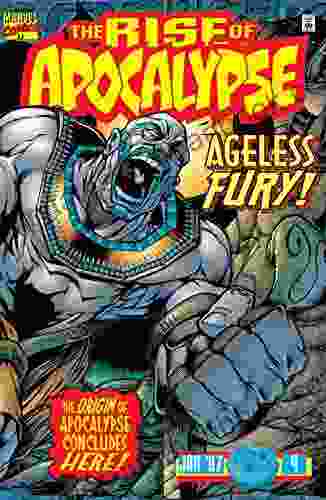5 out of 5
| Language | : | English |
| File size | : | 97480 KB |
| Screen Reader | : | Supported |
| Print length | : | 21 pages |
In the vast tapestry of X-Men comics, Terry Kavanagh's Rise of Apocalypse 1996 stands as a seminal work that has left an enduring mark on the mutant mythology. Published by Marvel Comics, this epic storyline delves into the origins and evolution of Apocalypse, one of the most formidable and enigmatic villains in the X-Men universe.
Kavanagh's narrative transports readers to a dystopian future where Apocalypse, an ancient and immortal mutant, has established a global empire. His Four Horsemen, War, Famine, Pestilence, and Death, enforce his iron-fisted rule, subjugating humanity and controlling the mutant population.
Apocalypse: The Genesis of a Mutant Overlord
Kavanagh meticulously unfolds the backstory of Apocalypse, revealing his origins as En Sabah Nur, a sickly child born in ancient Egypt. Through centuries of experimentation and genetic engineering, En Sabah Nur transformed himself into Apocalypse, a being with unparalleled power and an unwavering belief in the superiority of mutants.
Apocalypse's ideology is centered around the concept of "survival of the fittest," where only the strongest mutants deserve to thrive. He believes that by eliminating the weak and inferior, he will create a new order where mutants reign supreme.
The X-Men: A Symbol of Resistance
Against Apocalypse's tyranny, the X-Men emerge as a beacon of hope and resistance. Led by Professor Charles Xavier, they represent the ideals of tolerance, diversity, and the peaceful coexistence of mutants and humans.
The storyline pits the X-Men against Apocalypse and his formidable forces in a series of gripping battles. From the chaos of the future dystopia to the time-bending adventures in ancient Egypt, the conflict between good and evil reaches its climax in a climactic confrontation that will shape the destiny of both mutants and humanity.
Themes and Symbolism
Rise of Apocalypse 1996 explores various profound themes that resonate with readers on a deep level. These include:
- The Nature of Evil: Apocalypse represents the embodiment of pure evil, a being who believes that his ends justify the means, no matter how cruel or destructive.
- The Struggle for Survival: The conflict between Apocalypse and the X-Men symbolizes the universal struggle for survival and the battle between good and evil that exists within all of us.
- The Power of Choice: The characters in the storyline are constantly faced with choices that will shape their destiny. Apocalypse's philosophy of survival of the fittest clashes with the X-Men's belief in tolerance and compassion.
- The Legacy of the Past: Apocalypse's origins and his experiences in ancient Egypt shape his motivations and ideologies, demonstrating the enduring impact of the past on the present.
Legacy and Impact
Rise of Apocalypse 1996 has left an indelible mark on the X-Men franchise and the comic book industry as a whole. It introduced Apocalypse as a major antagonist and cemented his status as one of the most iconic villains in Marvel Comics history.
The storyline also had a significant impact on the X-Men's mythology, setting the stage for future events and shaping the relationships between the characters. Its themes and symbolism continue to resonate with readers, making it a timeless and influential work.
Terry Kavanagh's Rise of Apocalypse 1996 is an epic tale that delves into the depths of human nature and the eternal struggle between good and evil. Through its compelling characters, gripping plot, and thought-provoking themes, it remains a cornerstone of X-Men lore and a must-read for fans of comic books, science fiction, and dystopian literature.


















































































































